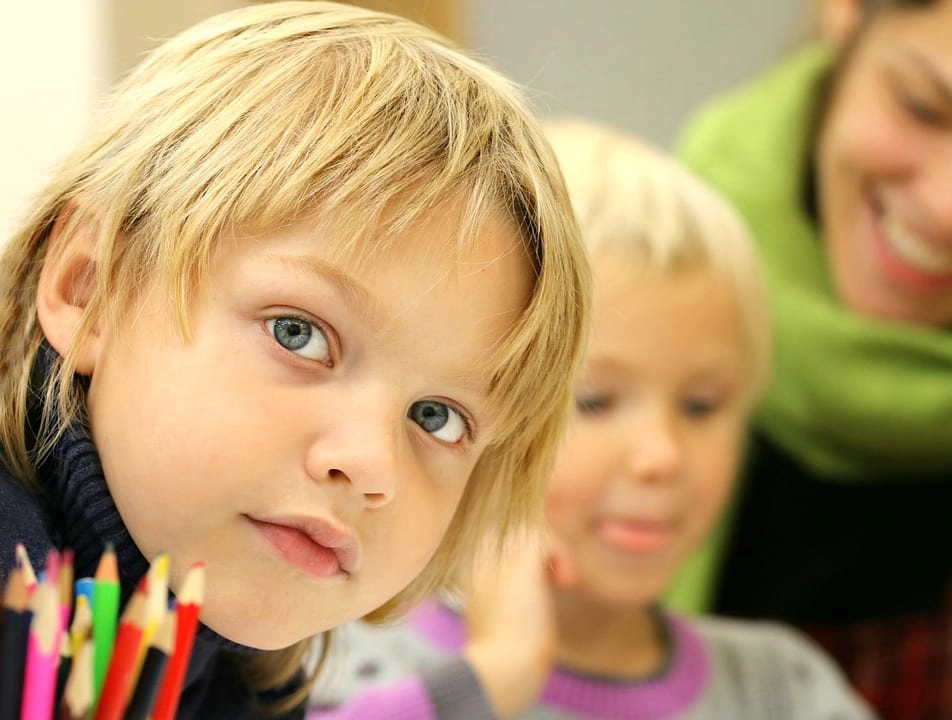By Brenda A. Henderson, Ph.D.
Nicole peeks around her mother’s side to watch Rachel chatter with the cashier in the grocery store. While at a family gathering, Jordan quickly agrees with whatever activity Jeffrey suggests. Colleen entertains a circle of their parents’ friends while Kerry hesitantly glances at them. These children want to interact with unfamiliar people, but remain silent, even when spoken to. They may go to great lengths to avoid calling any attention to themselves, as when Jordan quietly whispers to Bryce, “Don’t sing; people will look at us.”
Twins naturally attract attention and when one twin doesn’t feel up to a bright sunny “hello,” others are quick to say, “That must be the shy one.” People automatically put labels on twins and to the parents’ dismay, they do this in front of them.
What is shyness?
Shyness is a feeling of anxiety that results in the child not responding in social situations. Although the shyness is not the complete child, it is an important part of the child’s personality. And if we minimize or contradict those feelings, we intensify the anxious feelings, which, in turn, increases the shyness. In some cases, children who are shy in public or unfamiliar settings can be less shy or even outgoing and gregarious at home and with people they know well. In these situations, there isn’t a reason for serious concern, as most of these children will overcome their shyness.
Almost all toddlers are bashful at times–some with unfamiliar people, some around peers and others with adults. About half of these children will no longer be shy by the time they are 5 or 6 years old. Of those who are, about half will have outgrown their shyness by the time they are teenagers. Although the remaining children may be shy throughout their lives, they can acquire skills and techniques to minimize their shyness.
When people say your child is shy
So how does a parent respond to comments that single out one of their twins as shy? The best response is to smile and kindly disagree with their statement. By offering a neutral option, your child receives the positive message that it is acceptable to be who he is. And when your child refuses to respond to a question by someone else? Prompt him and then go on with the conversation whether or not he responds. This gives your child an opportunity to interact if he feels comfortable, while not placing pressure on the child.
Helping your twins
“Kerry is shy,” says Sharon Murphy, Ph.D., a child psychologist in Hinsdale, Illinois, and mother of 5-year-old twin girls, “while Colleen is spontaneous, more of a risk taker. I want Kerry to feel comfortable and to know that it’s okay to be shy because that’s her temperament.” Dr. Murphy has helped Kerry by allowing her to be comfortable in her own way rather than pushing her to be like her sister. Over the past year, she has watched Kerry go from an anxious, and sometimes envious, observer to a child who is gradually joining in. Dr. Murphy feels that “Kerry needed to be ready to do that on her own,” and she understood that if she attempted to push Kerry into socializing too soon, it could have increased her anxiety.
Twins often–but not always–are in similar developmental stages and have similar needs. Therefore, it is important when you encourage your less sociable twin to maintain the spontaneity of the more outgoing twin. Having them take turns is an easy and positive routine to develop. This worked well with our now 4-year-old identical twins, Rachel and Nicole. We began to do this when, at age 3, we noticed that Rachel was speaking up quicker and participating more than Nicole. Over time, Nicole began to withdraw more, defer to Rachel’s decisions and gradually not verbalize much at all, especially in unfamiliar situations.
Our response was to alternate asking questions of the girls, and when activity was required, alternate who went first. We did this for questions and activities, such as choosing a book to read or being first to brush her teeth. Initially, Nicole gave the same response as Rachel or changed her answer to correspond with Rachel’s. However, she gradually began to answer with her own ideas and desires, and to volunteer to be first. We extended this approach to situations outside the home. Taking turns was pivotal in helping our cautious twin to feel comfortable with expression and participation. By being patient and understanding of any initial hesitation, her self-esteem and confidence increased.
It’s important for parents to show they love and accept their child for who he is, not because they expect him to be outgoing. It is also important to encourage each twin to be proud of the other’s successes. Parents should praise small attempts as enthusiastically as accomplishments. Joe and Sharon Gaston, of Austin, Texas, feel that each of their twins, Jeffrey and Jordan, “has his own strengths. When we see Jordan beginning to withdraw or to allow Jeffrey to dominate the situation, we help them by redirecting their activities to an area in which Jordan excels.”
Time for concern
In this society, shy people are perceived negatively; there is more approval for being bold and outgoing. At times, most children experience shyness, but some children experience it to a debilitating degree.
A naturally timid child may have less frequent social interaction and, consequently, less opportunity to acquire social skills, which leads to a shy response style. Overall, these children have fewer friends, avoid being in the spotlight and are more likely to feel lonely and to have low self-esteem. Parents, siblings or others can amplify this by teasing or criticizing the child. Sensitive children with a poor self-image find it easier to withdraw, avoiding situations and people who cause discomfort.
You should be concerned, if by age 4, your child’s shyness prevents her from venturing away from your side, playing with friends, or participating in preschool lessons. By the late elementary years, this withdrawal reflex can become deeply ingrained. Physical symptoms (stomachache or headache) are classic features of shyness or social anxiety. If these types of symptoms develop, consult a psychologist who specializes in working with children and families. Be supportive of your children’s temperament. Always show respect and sensitivity to their needs. Stop worrying about your children’s personal style and say “I love you” often. By ending on a success, you’ll help your children stay enthusiastic and become self-confident.
Brenda A. Henderson, Ph.D., of Chicago, Illinois, is a pediatric clinical psychologist and mother of identical twin girls born in April 1995.






